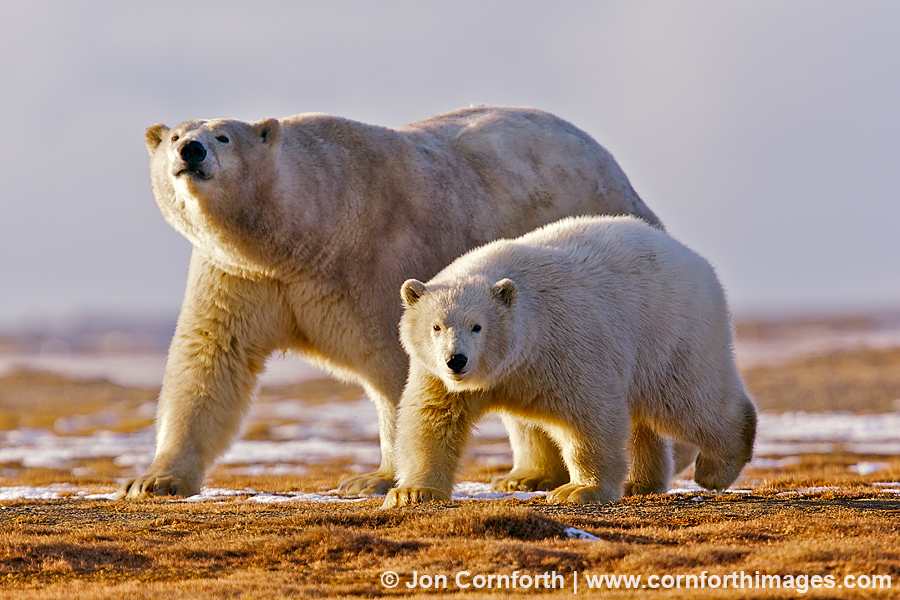
Polar Bear Photography Tour
Posted onThis fall, renowned wildlife photographer Steve Kazlowski and I will be leading a polar bear photography tour in Arctic Alaska. Steve has been successfully photographing polar bears in this location for the past 13 years. His images have been published by Time and National Geographic and he is the author of The Last Polar Bear: Facing the Truth of a Warming World.
We will spend 3.5 days photographing polar bears during each of our tours. We will use locally-rented trucks to photograph the bears and there will be an optional boat adventure available working with local guides. We will have a maximum of 3 guests per vehicle. Our small group size will allow us to observe the bears and remain highly mobile. Plus, Steve & I will be able to provide personal photography advice that is impossible in larger tour groups. Our goal will be to photograph classic polar bear portraits and behaviors. At night, we will continue to photograph polar bears, but there is a possibility that we will also photograph the aurora borealis. This is an exciting trip that will allow the discerning photographer an incredible opportunity to photograph polar bears in Alaska.
For more information, please visit my Polar Bear Photography Tour page.
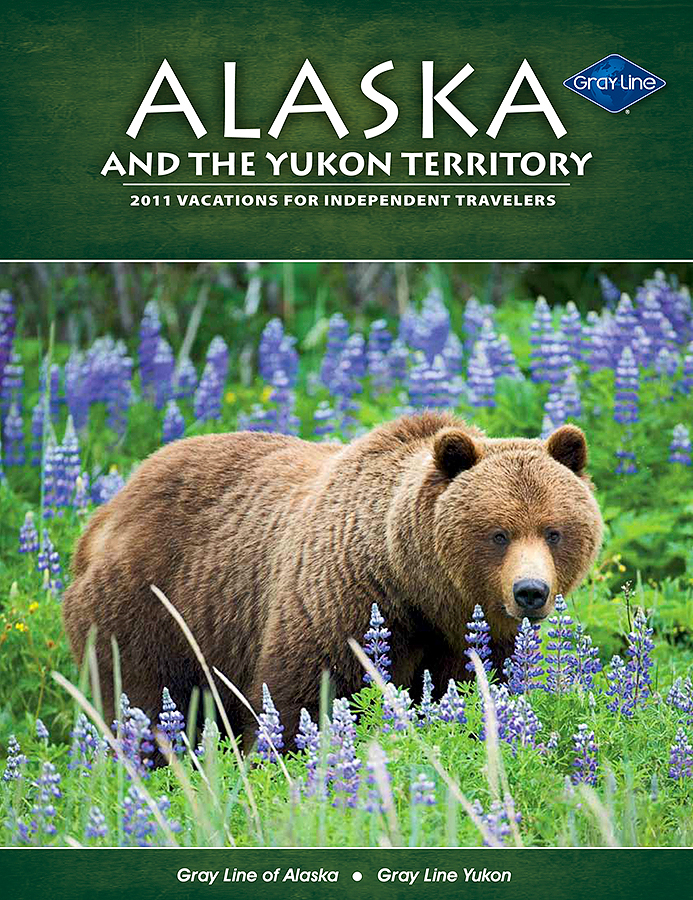
Gray Line Alaska 2011 Cover
Posted onA few months ago, Gray Line of Alaska contacted me about licensing my image of a brown bear surrounded by lupine for the cover of their 2010 brochure. Here is what the cover looks like. You can also download the brochure here. I photographed this brown bear during my week-long visit to Lituya Bay on the remote outer coast of Glacier Bay National Park in June 2009. You can read how I created this image in my original blog post.

Humpback Whales Bubble Feeding 132
Posted onPhotographing humpback whales bubble-net feeding in Southeast Alaska is the most incredible experience that I have. Over several days in July, I was again fortunate to witness this extraordinary behavior. Even though I cruise with my own boat, finding a groups of whales feeding can be difficult and time consuming. However, once I have located them I drift nearby for hours hoping that they will occasionally come close enough to be photographed. During their attack the whales emit a high-pitched song to scare the fish and coordinate their timing. (Check out my YouTube video to hear what it sounds like.) To create a picture like this, my reflexes have to be lightning fast. It certainly helps if my camera is already pointed in the right direction when they break the surface. The momentary drama of water exploding into the air and fish jumping out of the whale’s wide-open mouths to avoid being swallowed is beyond my wildest dreams. I used my Canon 7D and 70-200mm f2.8 IS lens at 70mm to create this image.

Chilkat Bald Eagle 227
Posted on“Whadya lookin’ at?” That is surely what this majestic bald eagle was thinking when it looked at me like this. The low-angle sunlight perfectly illuminated its breast while perched on this log, while the forest in the distance rendered as fantastic orange bokeh. Magnificent! Over the course of our time together, I photographed the occasional glare in my direction, but this picture with the curious tilt of the head was the most compelling. Notice how I left enough empty space above the eagle’s head so that a publisher could use this as a potential cover? I have to resist the urge to fill the entire frame. I used my Canon 7D and 500mm f4 IS lens to create this image.
Humpback Whale Breach 117
Posted on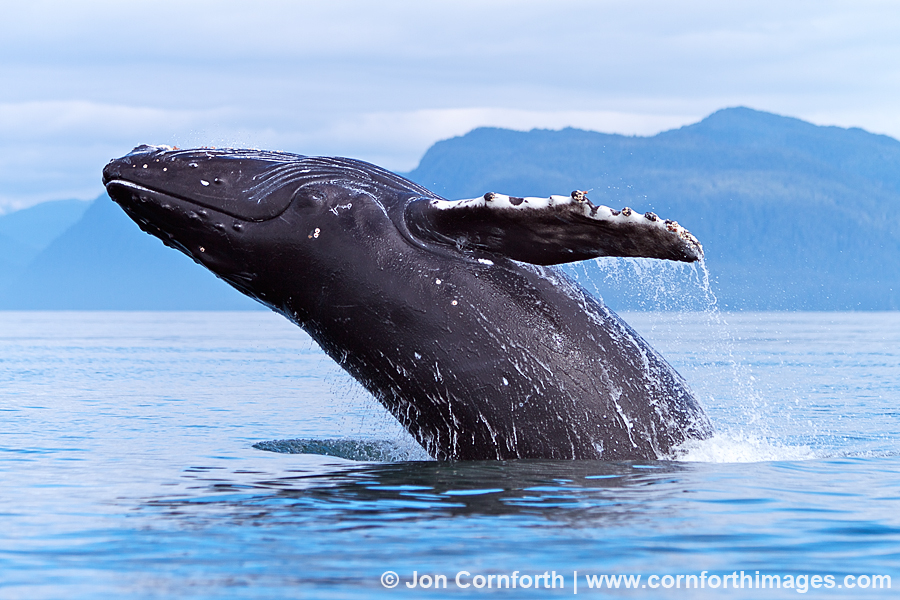
Here is another amazing humpback whale breach that I photographed during my July trip in Southeast Alaska. Breaching whale encounters never get old. I wish that I could photograph whales every day, but for a variety of reasons it would be impractical, least of which is that they don’t cooperate like this very often. This juvenile humpback probably breached close to 100 times over the 2+ hours that I spent photographing it. This gave me ample time to maneuver my inflatable into position with the sunlight at the best angle and with the most pleasing mountains in the background. I did not anticipate where the whale was going to breach correctly every time, but when I did, I was rewarded with images like this one. The hardest part of photographing breaches is having my camera pointed in the right direction and responding fast enough before the entire moment is over. I used my Canon 7D and 70-200mm f2.8 IS lens with a shutter speed of 1/1300 second to stop the action.
Alaska Exposed December 2010
Posted on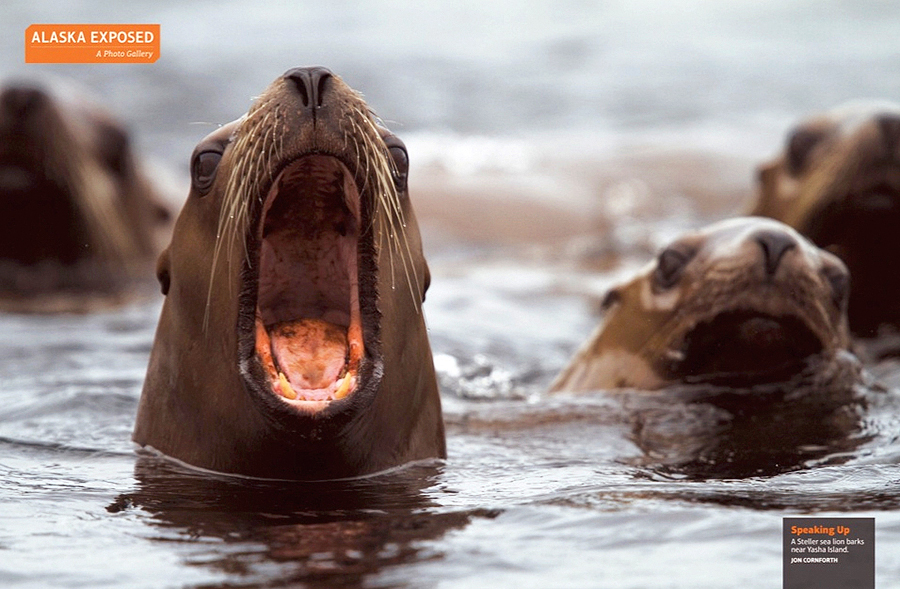
One of my new Steller sea lion images is featured in the Alaska Exposed section of the December 2010 issue of Alaska. Typically, it takes me a few months to process my new images before I get them on my website or submit them to my agents. However, Alaska saw this image on my blog back in September and immediately contacted me about publishing it. In my experience this is an unusually quick turn-around from creation to publication.
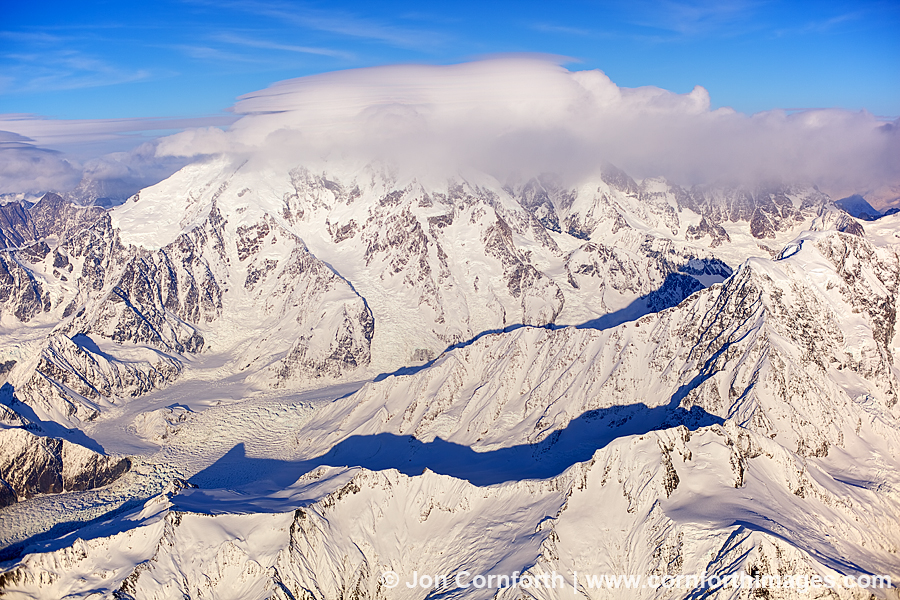
Mt Fairweather Lenticular Aerial 1
Posted onBLECH! That is exactly what I felt like doing during my recent aerial shoot of Mt Fairweather. My pilot gave me ample opportunities to back out of the flight. He told me that even though the weather was clear in Haines that it was going to be a bumpy ride over Glacier Bay National Park to the outer coast. I repeatedly assured him that I was an experienced photographer who was not afraid of anything. I was wrong.
While the initial flight went smoothly, the enormous lenticular cloud over the summit of Mt Fairweather in the distance was indication that it was going to get a lot more interesting. I was disappointed that I was not going to photograph the summit, but my compensation was this dramatic multi-layered cloud. I also anticipated that my earlier photos were going to have the best light since the sunset was going to be prematurely blocked by marine clouds on the horizon. As promised, the flight eventually became much rougher as we flew over the highest mountains en route to the outer coast. As we worked the small plane into position to start taking pictures, I looked down 14,000 feet to Lituya Bay and reminisced about the week that I spent there photographing wildflowers in June 2009. I opened the window every few minutes, but the combination of cold air rushing in and turbulence made me regret not having taken a Dramamine earlier. The prominent ridges and shadows beneath the mountain appealed to my vision of how I wanted to photograph the mountain. I had to concentrate like never before in order to open the window and use my camera through the hard-banking and bumps. Physically, this was one of the most challenging photos that I have created, but I am pleased with the results.
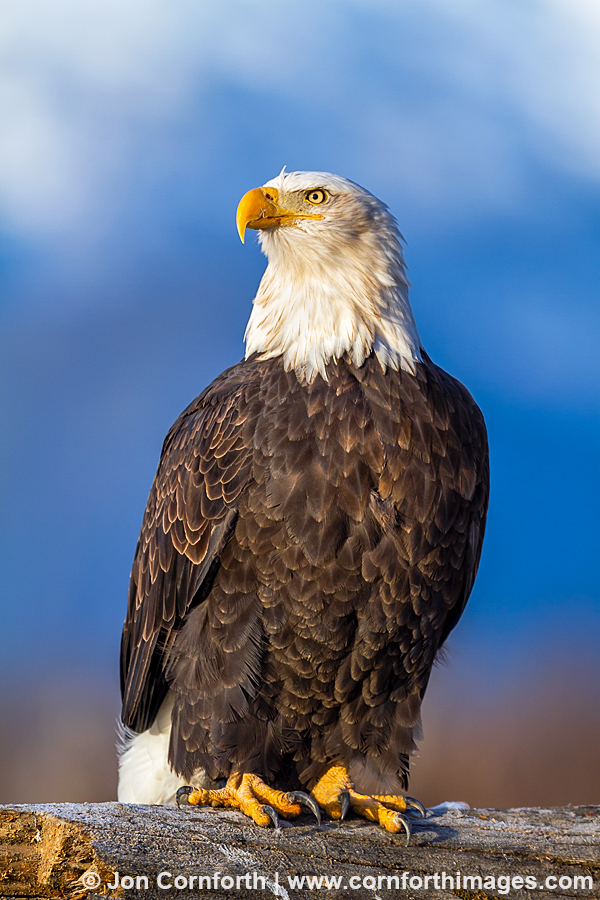
Chilkat Bald Eagle 242
Posted onWhat my recent trip to Alaska lacked in eagles in action was more than made up for by cooperative eagles in beautiful light. I photographed hundreds of images of eagles waiting for a decisive moment to unleash a glaring stare or unrestrained call. Most of my best new images involve direct eye contact. I mostly deleted my images where the eagles were simply too complacent. This image resonated with me because the eagle’s stand-up attention made it appear noble and proud. However, this common anthropomorphization does not necessarily agree with their lazy and opportunistic nature. I created this image with my Canon 7D and 500mm f4 IS lens using minimal digital processing. For this photo, I precisely positioned my camera so as to render the distant snow-capped mountain, forest, and bushes as pleasing bokeh. I always advise photographers that, when using a long telephoto lens, what is behind the subject is just as important as the subject.
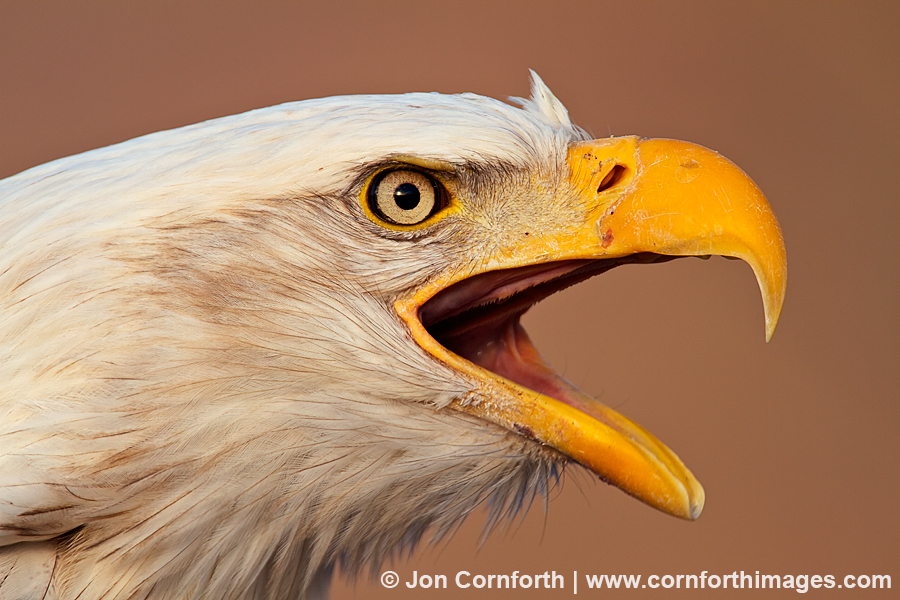
Chilkat Bald Eagle 200
Posted onI just got back from leading my 2010 Haines Bald Eagle Photography Tour. It was awesome, but Alaska always is. I had 4 clients signed up to join me, but at the last minute only 2 were able to attend. This was the first time that I worked with Paul & Kim and we had a great time together. Paul had never used a real camera prior to our trip and was skeptical about taking a photo tour, but I made him a believer in dSLRs as his photography skills improved each day. There were not as many eagles around this year, possibly due to the unusually warm fall weather, but we made the most of the opportunities we had. What was lacking in eagle numbers and activity was more than made up for by close-up portraits in beautiful golden light. To create this image, I used my Canon 7D with a 500mm f4 IS lens and 1.4X tele-converter. That is effectively an 1120mm lens! If you’ve never done it, I highly recommend micro-adjusting your camera bodies and lenses. I can not believe how sharp my images are after doing so, especially when using the tele-converter. I was able to get within 15 feet of this cooperative eagle for almost an hour. I placed my camera in a position so that the trees bathed in golden light behind the eagle rendered as this pleasing red bokeh. I like this image because of the eagle’s open beak when it briefly called out to another eagle flying by.
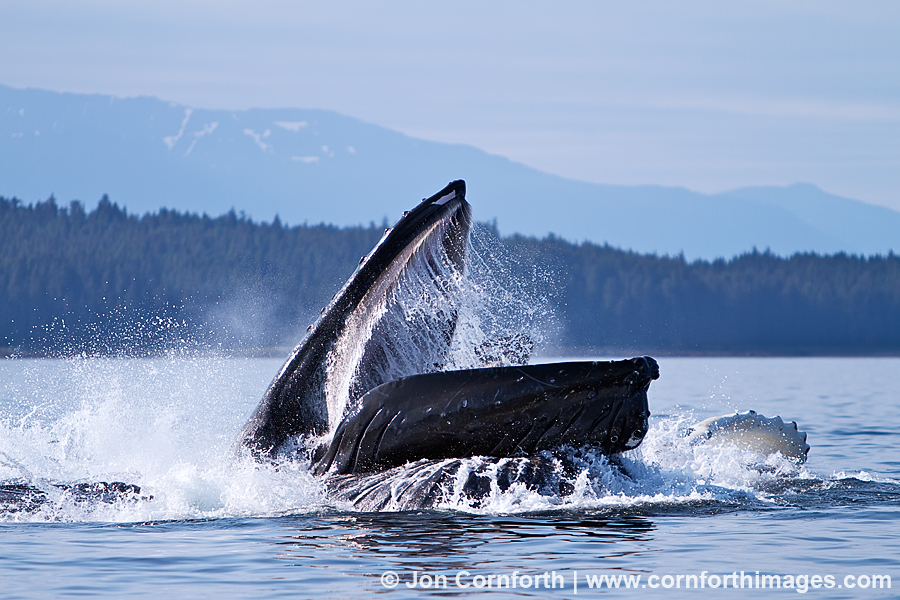
Humpback Whales Bubble Feeding 100
Posted onI always say that if I could photograph only one thing, that it would be whales. Unfortunately, they are the most difficult and expensive subject that I photograph. I have swam next to these gentle giants and watched them repeatedly breach into the air, but the most amazing behavior I have documented is humpback whales bubble-net feeding in Alaska. This phenomenon involves a group of whales diving beneath a school of fish and blowing a ring of bubbles underwater to effectively form a net as it rises to the surface. The ring can be up to 100′ in diameter. The fish get scared by the bubbles and become concentrated in the center. At the last second the whales swim up from beneath the school of fish with their months open swallowing everything they can in one enormous gulp. Research has shown that the individual whales repeatedly take up the same positions as they come out of the water during each attack. The best photographs include the most dominant whales in the center positions as they burst above the surface and slam their mouths closed. An incredible amount of patience and luck is involved in anticipating where the whales are going to form a bubble-net. If I am close enough and can see the bubbles rising at the last second, I have to react fast enough to capture the moment as they lunge out of the water. Magnificent!
